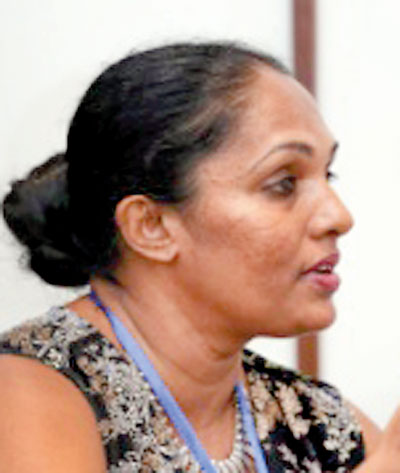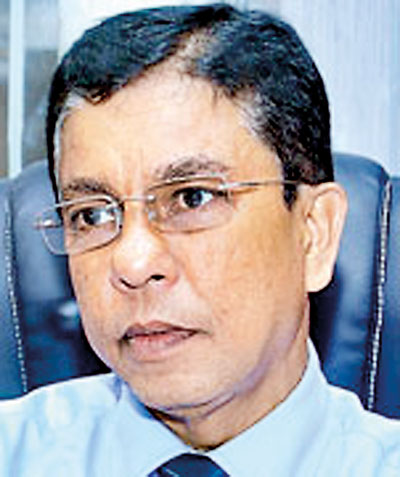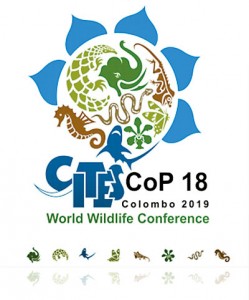News
Sri Lanka gears for huge wildlife powwow
No paper, no plastic and no polythene – this is why the “biggest-ever” international conference to be held in Sri Lanka next year will be doubly unusual and unique.

Dr. Sevvandi Jayakody
The nearly two-week conference from May 23-June 3 which hopes to attract high-level delegations from 183 countries including Sri Lanka is CITES-CoP18.
This Conference of Parties (CoP) on the Convention on International Trade in Endangered Species (CITES) of Wild Fauna and Flora is held once every three years, with the last being in Johannesburg, South Africa in 2016.
A green, plastic-free conference with minimal paper use is what the CITES CoP18 Sri Lankan Secretariat now in action at the BMICH, is aiming for. The Sri Lankan Secretariat’s Coordinator is Dr. Sevvandi Jayakody and the Director of Biodiversity and Cultural Events is Samantha Gunasekara.
Another first will be the calculation of carbon emission from the conference, with a request to the Forest Department to allocate land to them to grow a ‘CITES Forest’ to offset that impact, the Sunday Times learns.
“We will not be distributing any plastic bottles of water at the conference. There will be glass decanters with clean drinking water,” said Dr. Jayakody.
Even at the media briefing held on Tuesday at the BMICH, no paper handouts were given, with advice that information could be accessed online, while water was in glass decanters.
The briefing was chaired by Buddha Sasana Minister Gamini Jayawickrama Perera who will oversee the holding of CoP18 along with ministry Secretary Chandraprema Gamage and local CITES head, C. Maliyadde, as it was during Mr. Perera’s tenure as Wildlife Minister that Sri Lanka secured the honour of holding the conference, it is learnt.
The other vital stakeholders include the Ministries of Foreign Affairs, Defence, Law and Order, Sustainable Development and Wildlife, Environment and Tourism.

Samantha Gunasekara
Explaining that nearly 4,000 delegates, officials, international and national non-governmental organisations and media will converge on Colombo for this world’s largest wildlife conference, Mr. Gunasekara said that at CoP18, India and Sri Lanka together are hoping to present a proposal to change the status of the Indian star tortoise (a threatened species), from Appendix II to Appendix 1.
Reiterating that holding CoP18 in Sri Lanka will help strengthen the country’s efforts to control the legitimate cross boundary movement of flora and fauna, Mr. Gunasekara said that the country should know the population size, export size/exploitation level of a species prior to issuing an export permit. Such data are vital in conservation.
“When we consider the exportation of wild-caught endemic freshwater fish species, it is an extremely detrimental trade for Sri Lanka. If CITES listed, this type of trade can be controlled,” he said, also focusing on Sri Lankan Agamids (lizards) in the German market. “This is a good example of our species being in the global market,” he said.
Giving a glimpse of what the ‘CITES Arena’ which will be the BMICH premises will look like next year in May, Mr. Gunasekara said that the surrounding areas will be a hub of national activity including cultural events, entertainment and food stalls. It is a great opportunity for Sri Lanka to attract more investors and tourists.
There will be art installations, competitions, street drama, mascot designs and national product markets around the conference venue. This ‘big’ UN conference will be a once-in-our lifetime event, he said, adding that it will only be the second time that it is being held in South Asia, after India in 1981 and the second time on an island after Japan in 1992.
Appreciating the support being extended by the Megapolis Ministry, the Urban Development Authority (UDA) and the Colombo Municipal Council (CMC), Dr. Jayakody explained that it was a great opportunity for all Sri Lankans, from little children to youth, to academics and researchers, to the elderly, to interact with experts from across the globe.
She called on all sectors to assist them in any way they could be it in kind, cash, technology, skills etc.
| What is CITES | |
| CITES or the Convention on International Trade in Endangered Species of Wild Fauna and Flora is an international agreement between governments, which aims to ensure that international trade in specimens of wild animals and plants does not threaten their survival. The Secretariat of CITES is located in Geneva, Switzerland. Today, CITES accords varying degrees of protection to more than 35,000 species of animals and plants. CITES is an international agreement to which states and regional economic integration organisations adhere voluntarily. So far, there are 183 ‘parties’ to CITES, with Sri Lanka joining in 1979. It is among the conservation agreements with the largest membership. States that have agreed to be bound by the Convention (‘joined’ CITES) are known as Parties. Although CITES is legally binding on the Parties – they have to implement the Convention – it does not take the place of national laws. It provides a framework to be respected by each Party, which has to adopt its own domestic legislation to ensure that CITES is implemented at the national level. Appendices I, II and III to the Convention are lists of species afforded different levels of protection from over-exploitation.
Species may be added to or removed from Appendix I and II or moved between them, only by the CoP. But species may be added to or removed from Appendix III at any time and by any Party unilaterally. |
| The winning logo | |
| Picking up the logo, Mr. Samantha Gunasekara said that a national level open competition was conducted to design it, with a competitor from Ampara, A.L.C. Dhanushka, winning it. In the logo, the five petals of Caralluma umbellate, symbolises floral species in trade and also represent the five continents. The circle within is Earth. The tag line urges the world’s communities to be vigilant and proactive. The blue of the five petals represents water and the brown and green shades within the globe, represent the earth colours. The species included in the logo are:
| |


